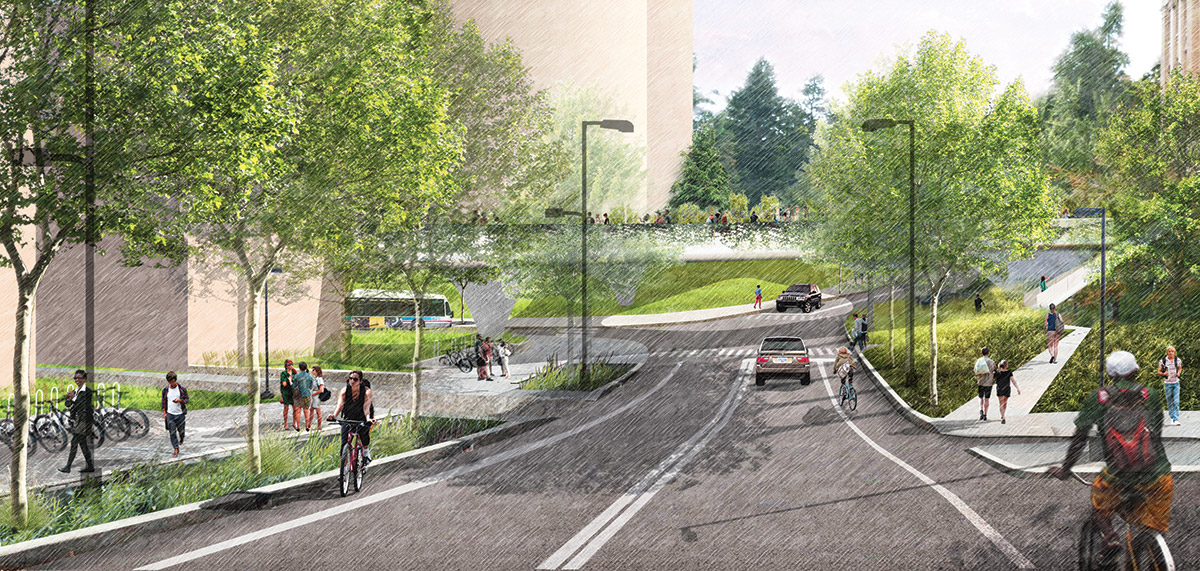
Coming Attractions
UW–Madison’s campus has long been known for its beauty. Iconic places such as Picnic Point and Bascom Hill bring back memories of campus life for decades of alumni.
But little of that beauty happens by accident. There’s a plan — a master plan.
Campus master plans are required under Wisconsin state statutes through the State Building Commission and by UW System Board of Regents policies. And City of Madison zoning codes also require UW–Madison to have an approved campus master plan every 10 years.
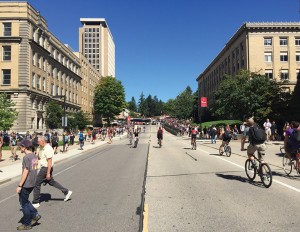
A footbridge over North Charter Street (top) would separate pedestrians from traffic (above) and make for an iconic campus gathering spot.
The last plan, unveiled in November 2005, laid out ideas to make the campus more livable, workable, and sustainable by examining existing and proposed buildings, outdoor spaces, transportation, and utilities. That document was influential, setting the stage for a period of construction that brought completion of the East Campus Mall, the Discovery Building, and Cooper Hall — home to the School of Nursing — among other changes.
This time around, the plan focuses less on building projects and more on proposals for infrastructure upgrades, landscape architecture improvements, and making outdoor spaces more usable. Ideas include building a “living bridge” across North Charter Street with landscaping and a plaza, adding a protected two-way bike lane on University Avenue, and providing direct access to the edge of a revitalized Willow Creek by adding outdoor terraces extending from a School of Veterinary Medicine expansion and a new Natatorium.
“People relate more to the landscape than physical buildings,” says Gary Brown ’84, director of campus planning and landscape architecture. “It’s really the heart of who we are.”
When Brown goes to Founders’ Day events, people never want to talk about lecture halls. Instead, they bring up the Memorial Union Terrace, experiencing Lake Mendota with Hoofers, and studying on Bascom Hill. Those spaces tie people to campus long after their student days, Brown says.
Campus officials have shared the current draft of the plan with students and other stakeholders at some 200 meetings, and they will submit it to the city for approval this spring.
For more details, visit masterplan.wisc.edu. See below for more images.
Published in the Spring 2017 issue
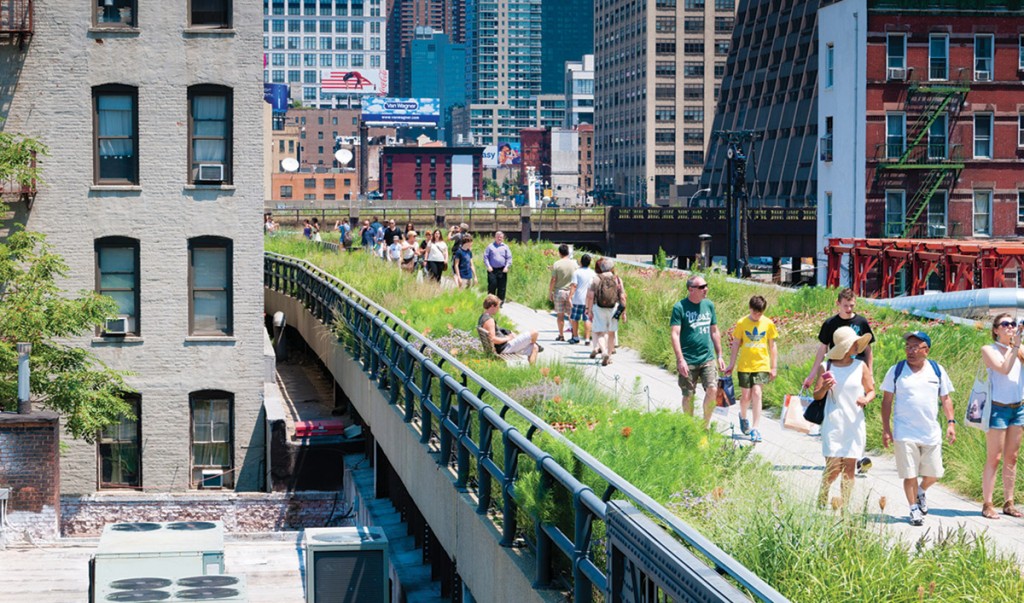
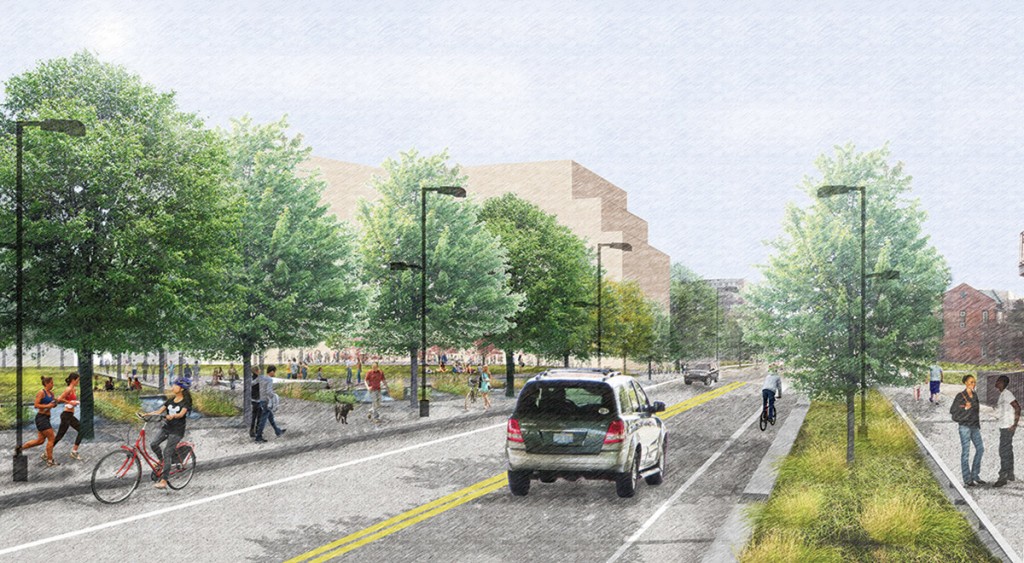

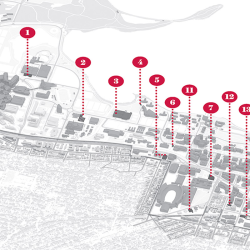

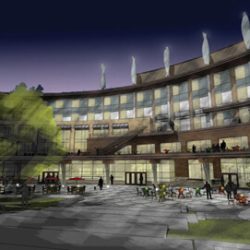
Comments
No comments posted yet.